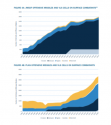asif iqbal
Banned Idiot
6 x KQ-200 ASW
4 x KJ-500 AWACS
not a bad mix
4 x KJ-500 AWACS
not a bad mix
Excellent report by professor Toshi Yoshihara comparing Chinese to Japanese navy. He concede that now China is way ahead over Japan and the gap will only continue. I follow his writing over the years and he used to be smug over Japanese superiority. Make a good reading here is the link
Introduction An extraordinary reversal of fortunes in Asia has gone largely unnoticed. Over the past decade, the Chinese navy overtook Japan’s maritime service in critical measures of power, including fleet size, aggregate tonnage, and firepower. Strikingly, China has embarked on a naval modernization plan of such ambition that, in the years ahead, its margin of superiority over Japan will widen at an accelerated pace. As China’s massive buildup that began in the 1990s gathers steam, Japanese seapower appears headed for an irreparable erosion in competitiveness.
Indeed, if China’s naval construction spree maintains its breakneck speed, the Chinese navy will likely leave behind permanently its Japanese rival within this decade. Yet, this power transition remains virtually unexamined. Whereas recent commentaries excitedly debated the significance of China’s emergence as the largest navy in the world, with it eclipsing the U.S. Navy in size, near silence surrounded the crossover points in the SinoJapanese naval balance.1
This indifference is puzzling considering its strategic significance. China and Japan are Asia’s two economic powerhouses and they sit atop the regional pecking order. Their strategic heft ensures that their interactions at sea, for better or for worse, will be felt across the Indo-Pacific and beyond. As these two hyper competitive seafaring neighbors undergo rapid changes in relative power, regional disequilibrium and its attendant risks will invariably follow. There is strong evidence that the naval power shift has already emboldened Beijing while stoking fears among Japanese leaders. Owing to mutual suspicions that run deep, both sides have succumbed to competitive impulses, lending momentum to a maritime rivalry that has been taking shape for at least a decade. Japan’s swift displacement as a seapower could also introduce doubts among local powers, including
Excellent read. The report drives home the astounding leap PLAN has made both qualitatively and quantitatively over the past two decades. Dr. Toshi Yoshihara is a professor at the U.S. Naval War College and has been a leading scholar on PLAN modernization.
I consider his work, along with the work of his colleague Dr. Andrew S. Erickson, to be of particular reading value as they base much of their research on original Chinese think-tank writing and public policy. Both of them being able to read original Chinese sources, unlike many of the "China Experts" in the West.
I would be hesitant to characterize his work over the years as a manifestation of "Japanese superiority complex". He has predicted the rise of PLAN in Asia-Pacific as early as 2010 with his book "Red Star Over the Pacific". This new report simply confirms the on-going trend of the past decade. I recommend those with a eye on this historical development to watch Dr. Toshi Yoshihara's Keynote Lecture:
at the U.S. Naval War College back in Feb 2013. He clearly laid out the Chinese perspective and it's historical case for pursuing Sea power. As impressive as the PLAN modernization has already been back in 2013, the sheer increase of Chinese naval tonnage since then has blown all forecasts out of the water.
Aren't the 052C and D also AEGIS
Aren't the 052C and D also AEGIS
Professor Toshi Yoshihara sounds like a total fanboy
Does he even know what AEGIS system is? JMSDF has 8 x AEGIS DDG, 2 x Maya Class, 2 x Atago Class and 4 x Kongo Class heavy destroyers, China on the other hand has 1 x Type 055 Commissioned
The average warship tonnage of JMSDF is much higher extremely professional and extremely disciplined, JMSDF is what you call a top tier navy
He is completely dismissing the JMSDF which shows he has zero naval knowledge and plays into hands of like minded fan boys



